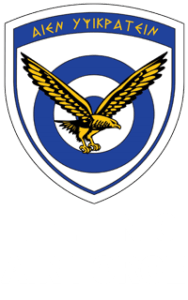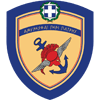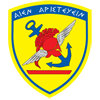
336 Squadron

Emblem
Eagle on the top of Mount Olympus
Call Sign: OLYMPOS
Location
116 Combat Wing – Araxos Air Base
Established
1943
Aircraft served
- Hurricane-IIB
- Hurricane-IIC
- Spitfire VB και VC
- Spitfire IX και XVI
- SB2C-5 Helldiver
- F-84G/F
- F-84F
- F-104G Starfighter
- A-7H
- Α-7Ε και TA-7C Corsair
Aircraft serving
- F-16C/D Block 52+ Advance
Mission
The mission of the 336 Squadron is to maintain a high level of readiness and effectiveness, in order to conduct successful air operations, whenever needed in accordance with current plans. It is achieved by the appropriate organization, training of personnel and maintenance of the available means and systems.
History
The 336 Squadron with call sign “Olympus”, was established for the 1st time, on February 25, 1943 at the “Landing Ground 219” airport near Cairo, Egypt. Its first name was 336 “Hellenic Royal Fighter Bomber Squadron”. The 336 Squadron was subordinated to the RAF 219 Combat Wing, and it was the second Fighter Bomber Squadron of the Hellenic Royal Air Force.
The squadron was initially equipped with 21 Hurricane-IIC aircraft, and had a total of 309 men, with twenty six (26) pilots.
On April 4 1943, it is transferred to the desert, at the LG121 airport, which was located near Sidi Barrani, Egypt, and it stayed there until January 1944. From April 11, 1943 the Squadron was full operational.
The missions were naval convoy protection, interception of hostile aircraft, offensive patrols and ground attack sweeps over Crete.
The Squadron’s main characteristic was the keenness and the willingness of all the pilots to participate in the missions. This led to having draws in order to determine which pilots would take part in the missions, because there were few aircraft and many volunteers. The missions carried out by the Greek pilots too often caused admiration to the allies.
In January 1944, the squadron redeploys to the Libyan airport of El Adem, where it stays until March 1944. Thereafter it redeploys to the Bu Amoud airport for a few days, and since April 1944 to the Marsa Matruh airport of Egypt.
In June 1944 the personnelstarted training to receive the new aircraft type, the Spitfire V. In July once again it redeploys to El Adem airport, where the reception of the new aircraft starts on September.
After a few days, the 336 Squadron is transferred to Italy at Nuova airport and from this base it carries out ground attack missions over Albania, Yugoslavia and occupied Greece.
Next station is the Biferno airport only for a few days and after that the squadron operates all November from Grottaglie airport, until its return to Greece.
It continues operating from Hassani airport against the German forces in Crete, Milos and the Dodecanese.
The 336 Squadron during WW II accomplished 3250 missions (day/night), conducting 12427 flight hours, 5116 of which in combat missions and the rest in training. The losses were twelve (12) pilots killed and three (3) captives.
In May 1945 it redeploys to Sedes airport in Thessaloniki and takes part in the civil war operations during 1946 – 1949. In February 1949 the 336 Squadron redeploys to Larissa and is integrated to the of 110 Combat Wing force.
In August 24 it is equipped with the Helldiver vertical attack fighter-bomber, changing its role to Light Bomber Squadron. Following this, it is equipped with the F-84G at Elefsis airport, while at the same time it is renamed to 336 Fighter Bomber Squadron.
On December 28 1953, it redeploys to Nea Anchialos. In 1958 it replaces the F-84G with the new F-84F and in March 1959 it redeploys firstly to 110 Combat Wing and then to 116 Combat Wing on December 4 1962. On September 25 1963 it is renamed to 336 Squadron.
On January 15 1965, the 336 Strike Squadron with F-104G aircraft is moved to 114 Combat Wing and at the same time the part of 336 Squadron with the F-84F stays to 116 Combat Wing. On December 23 1966, the 336 Strike Squadron with the F-104G is moved back from 114 Combat Wing to 116 Combat Wing.
From December 1966 until March 31st 1993, the 336 Squadron maintained the F-104G aircraft. From this date on, it is renamed to 336 Bomber Squadron and starts receiving the A-7E and TA-7C. With those aircraft types it operates at first as Re-training Flight for the F-104Gs pilots to the new aircraft type A-7E.
The HAF bombing ability was increased with the A-7 aircraft, because of their great capability to carry a heavy weapon load to long distances and deliver it to the target with satisfactory accuracy.
On October 2014, 7th the LTV A-7 Corsair II was retired. On July 2015, 13th the first flight of F-16 with call sign “OLYMPUS GOLD” was accomplished.




